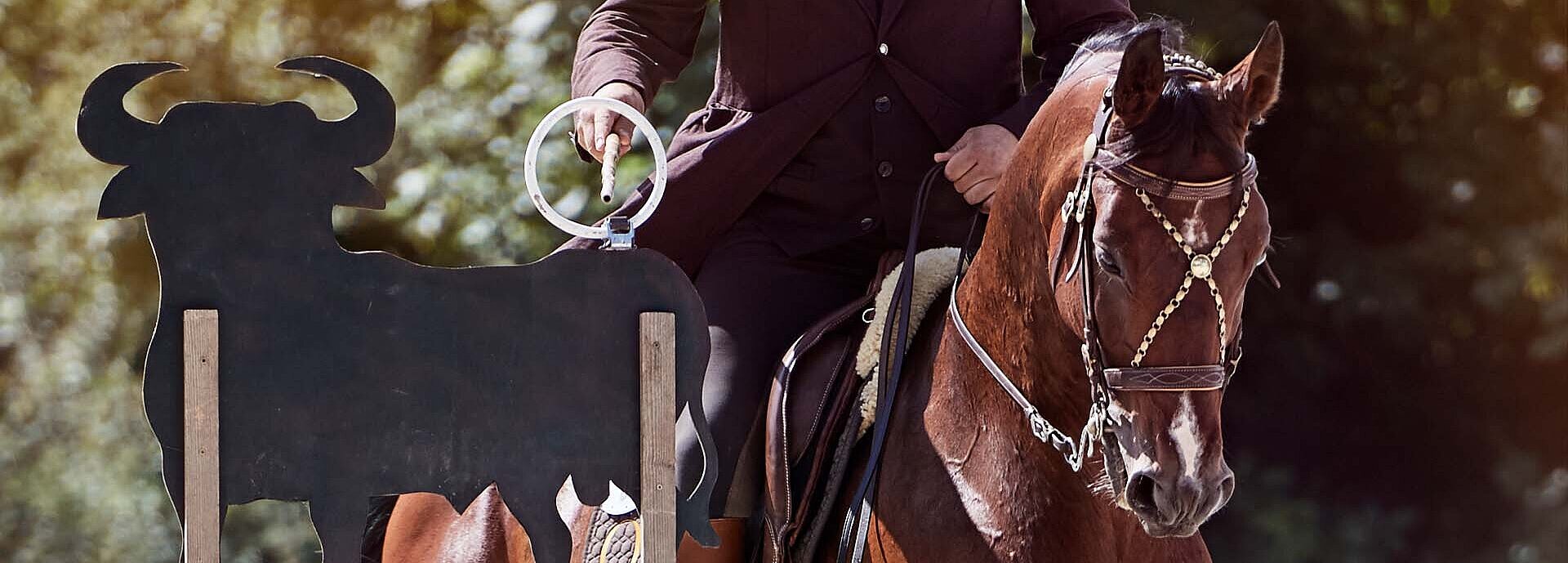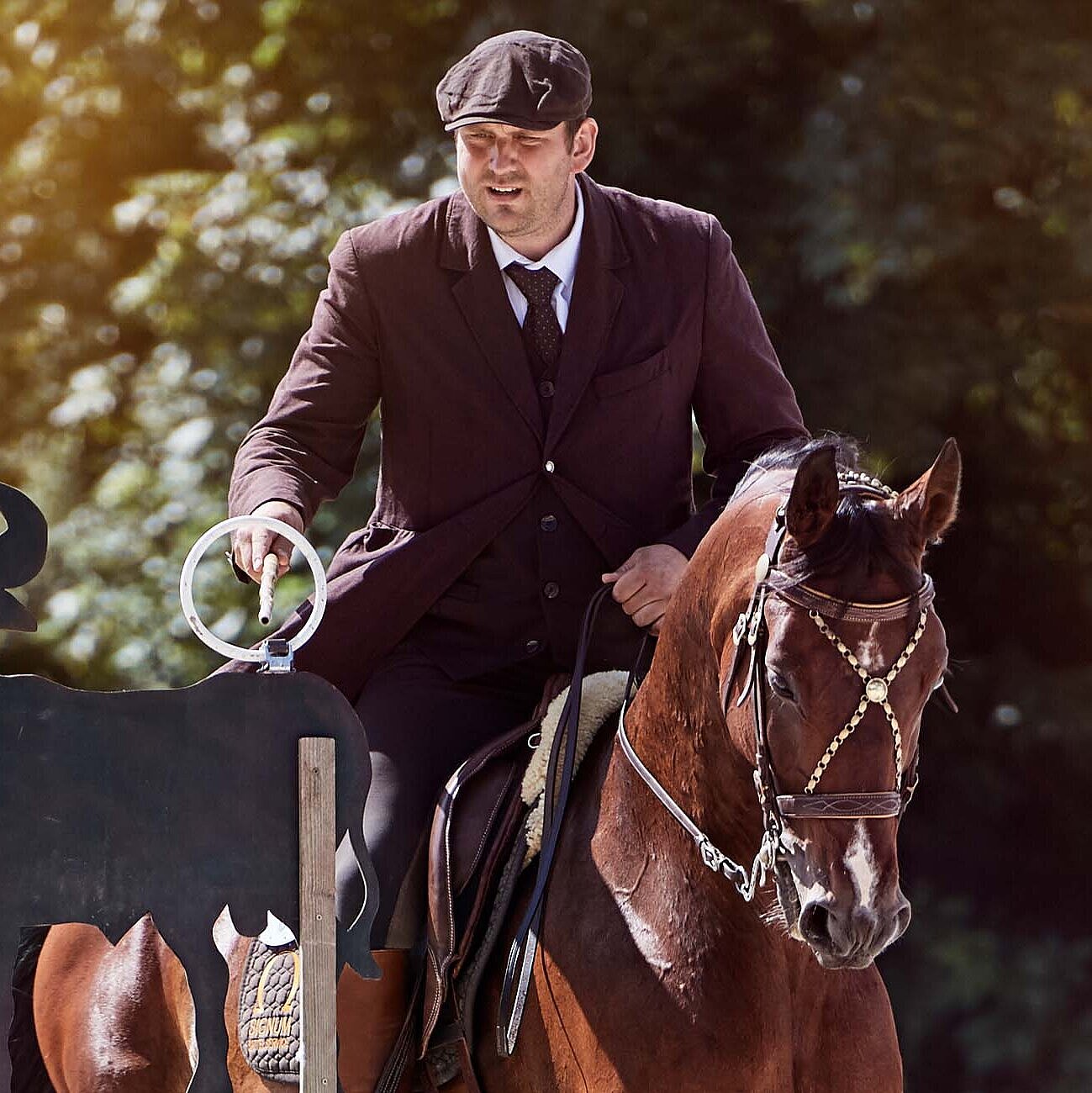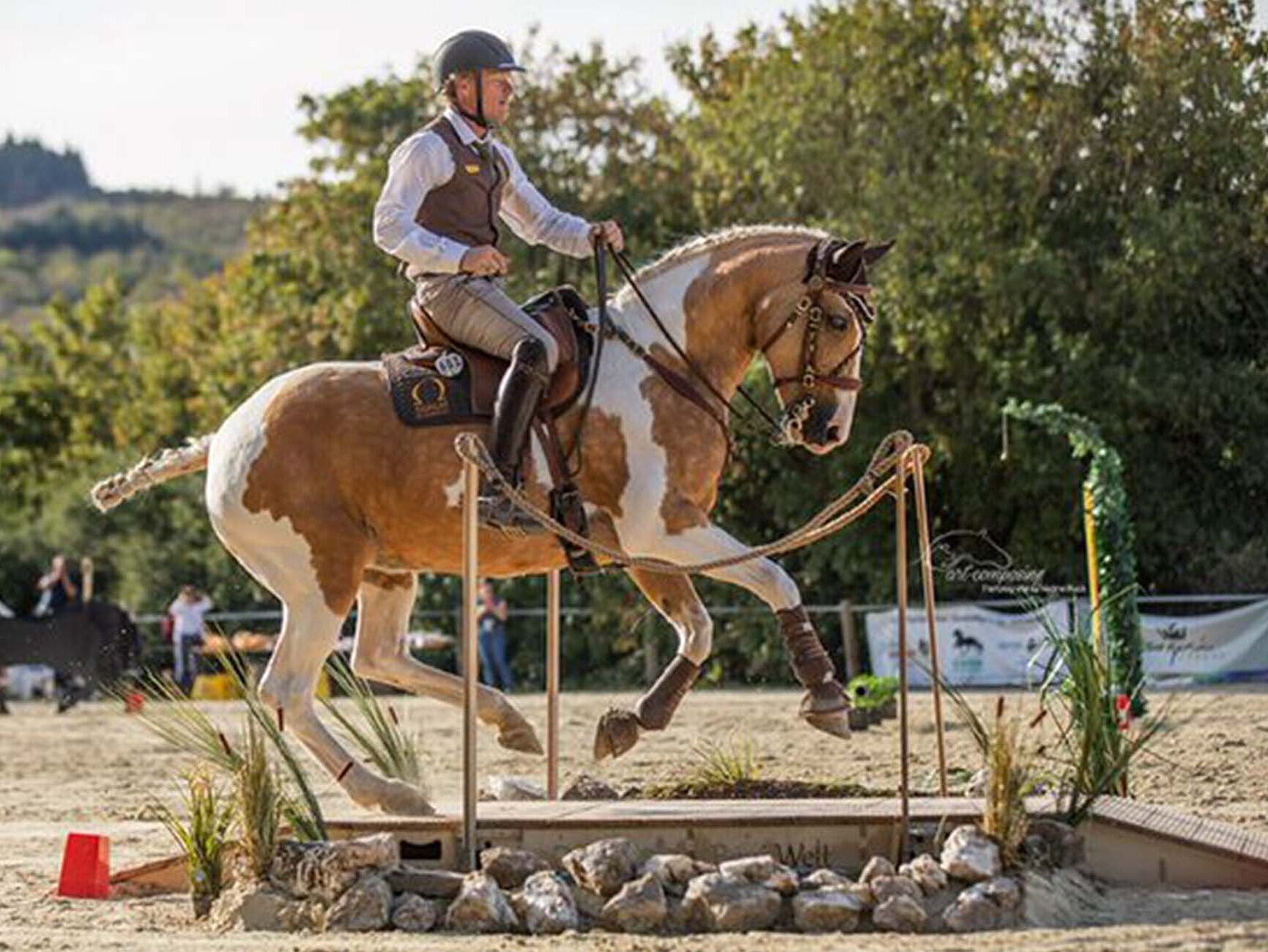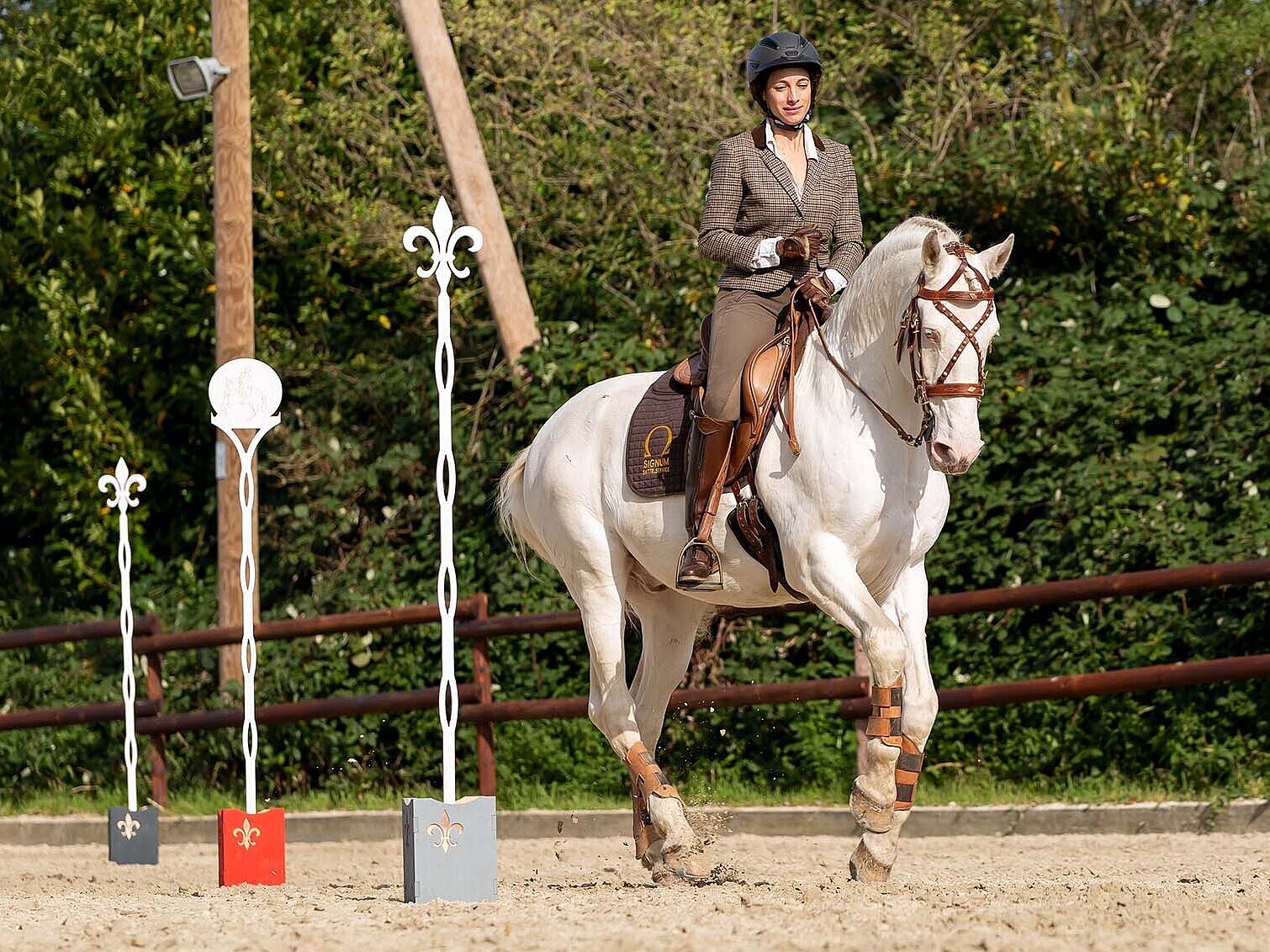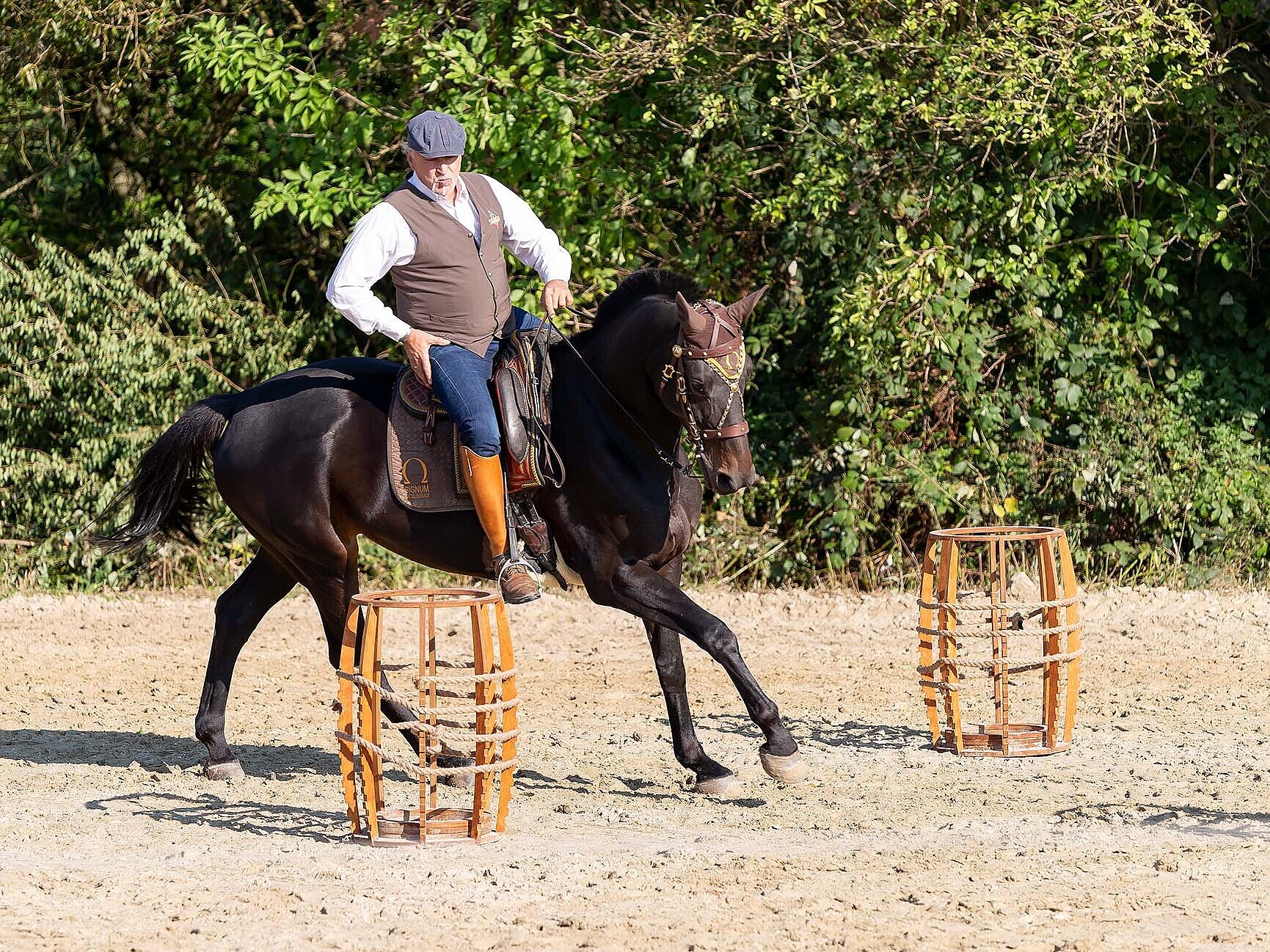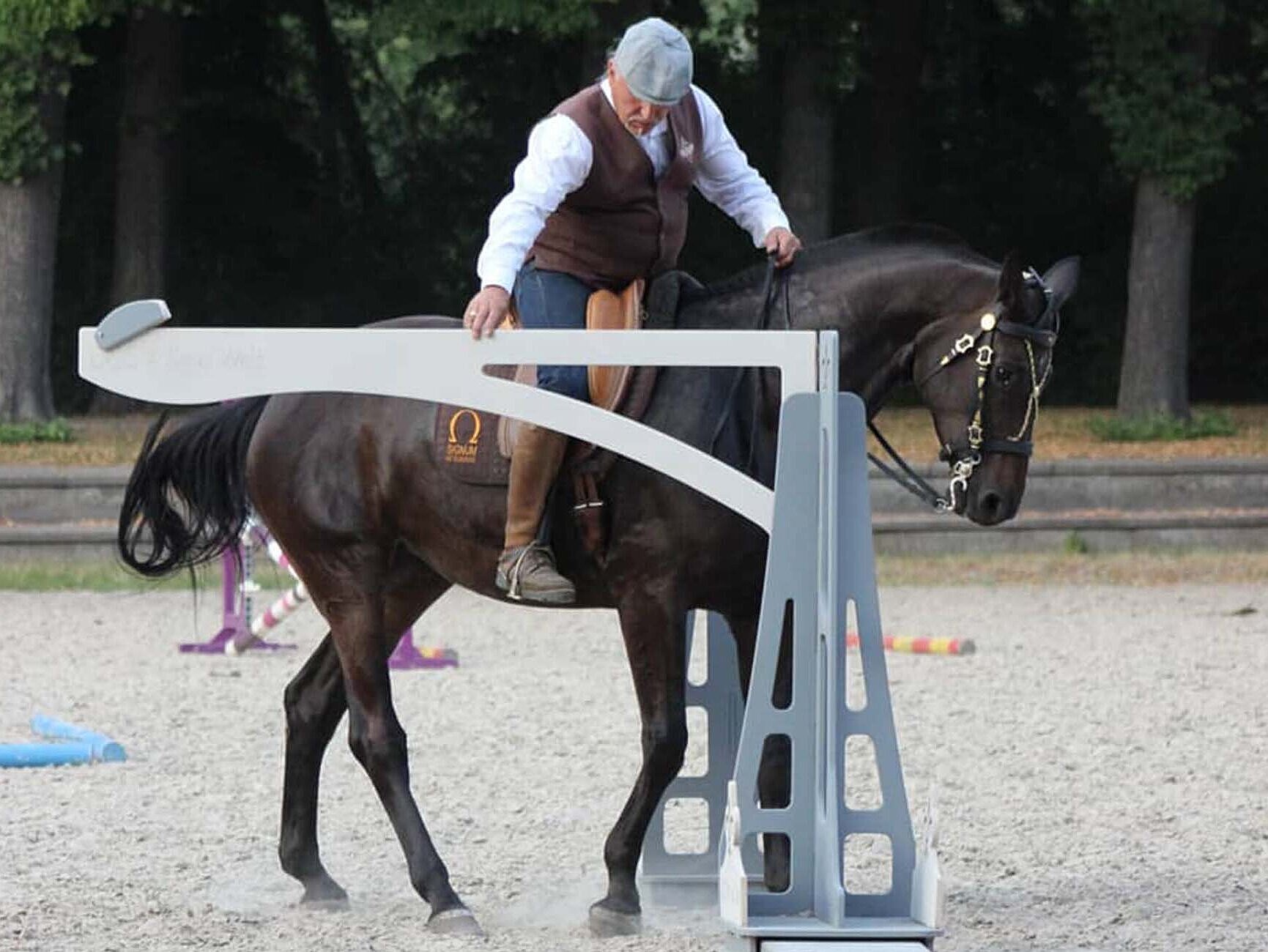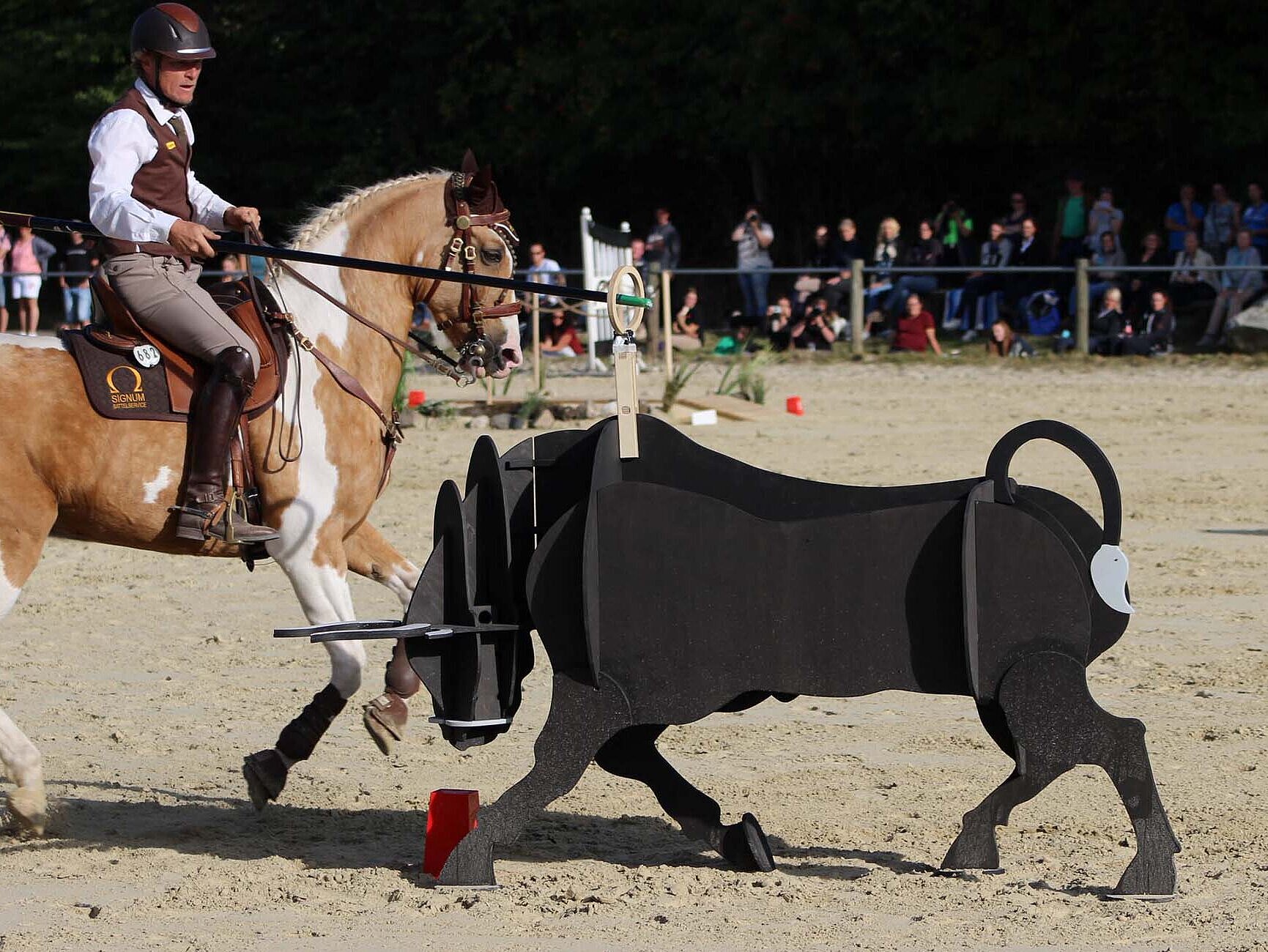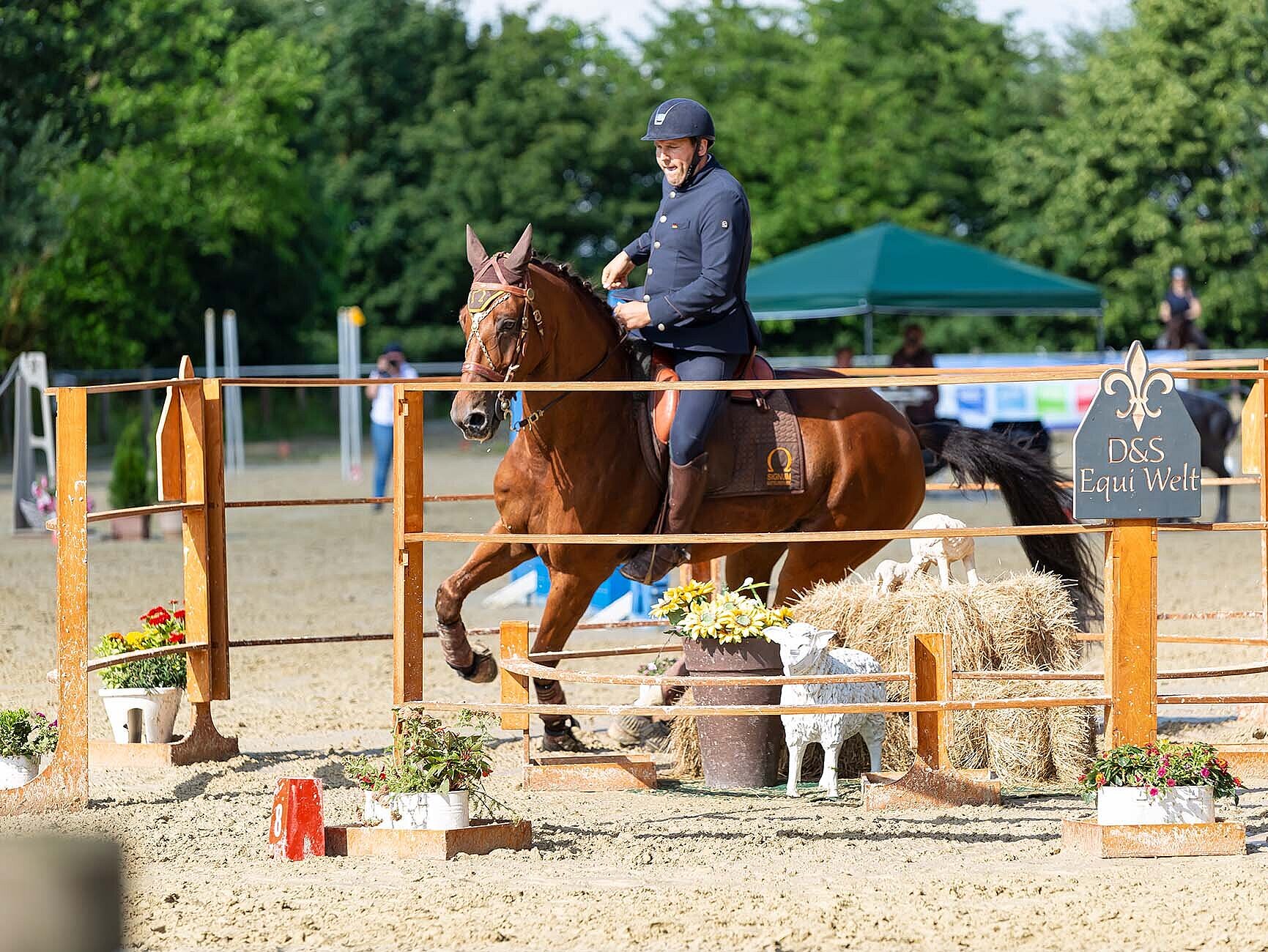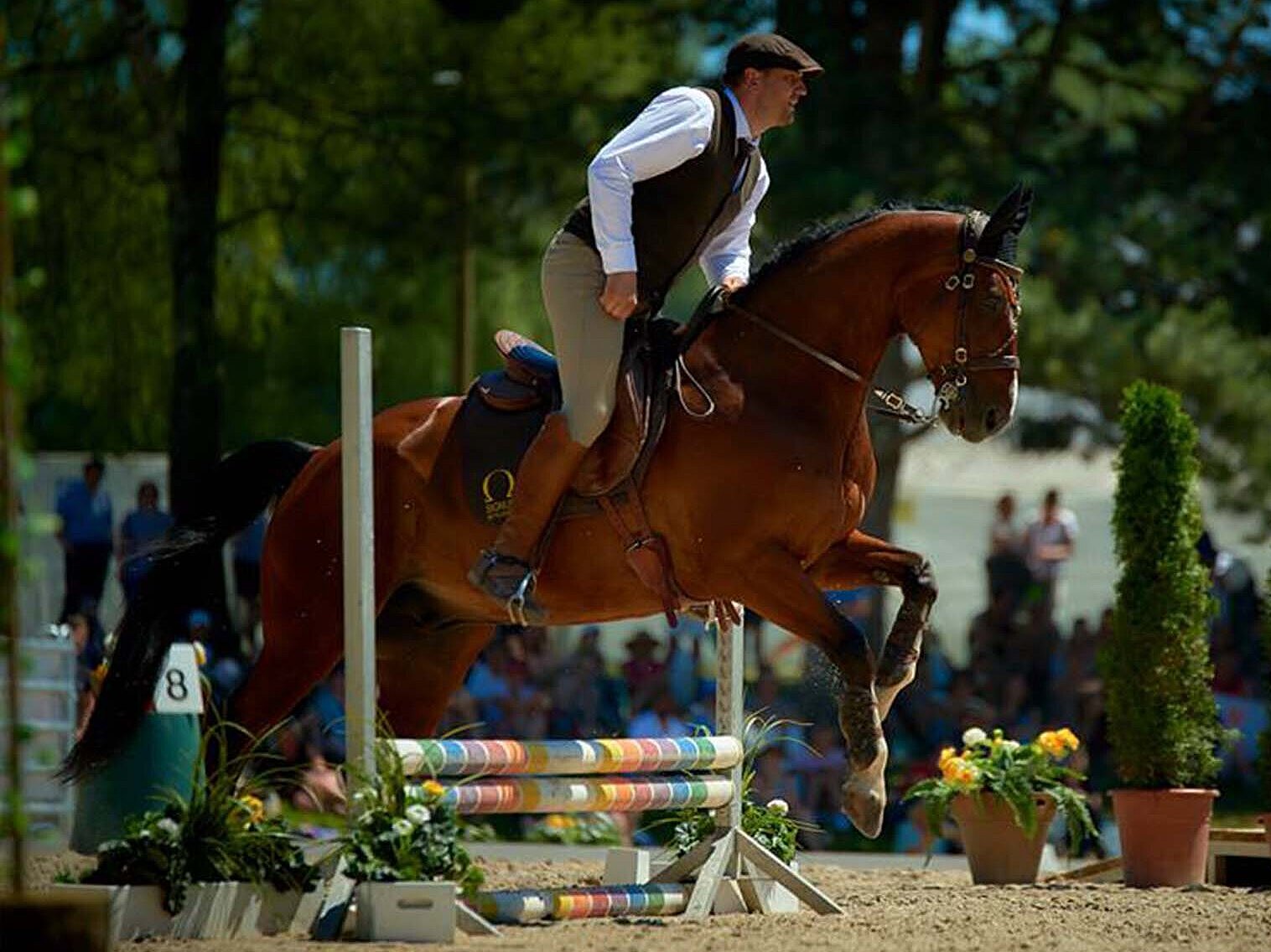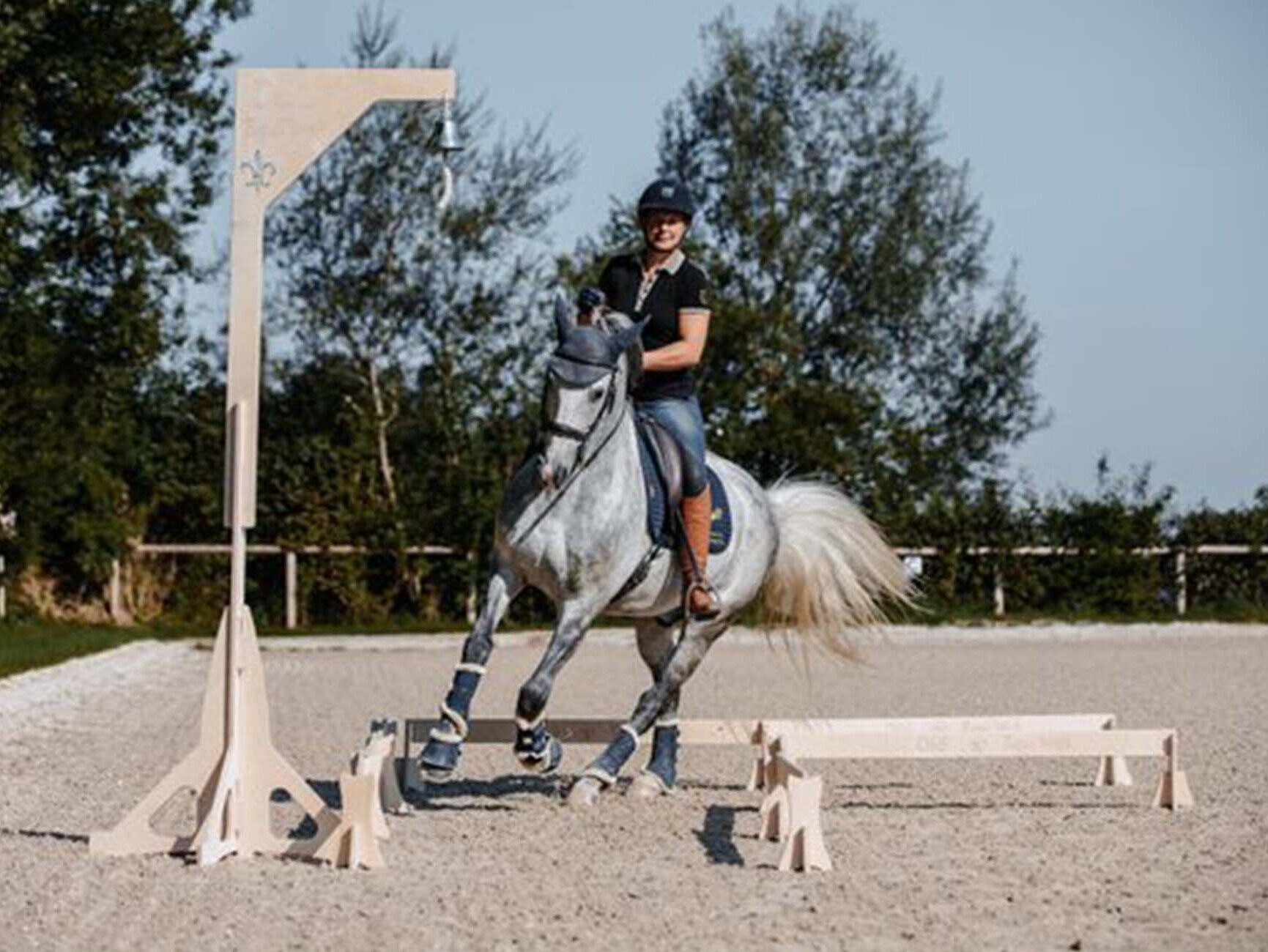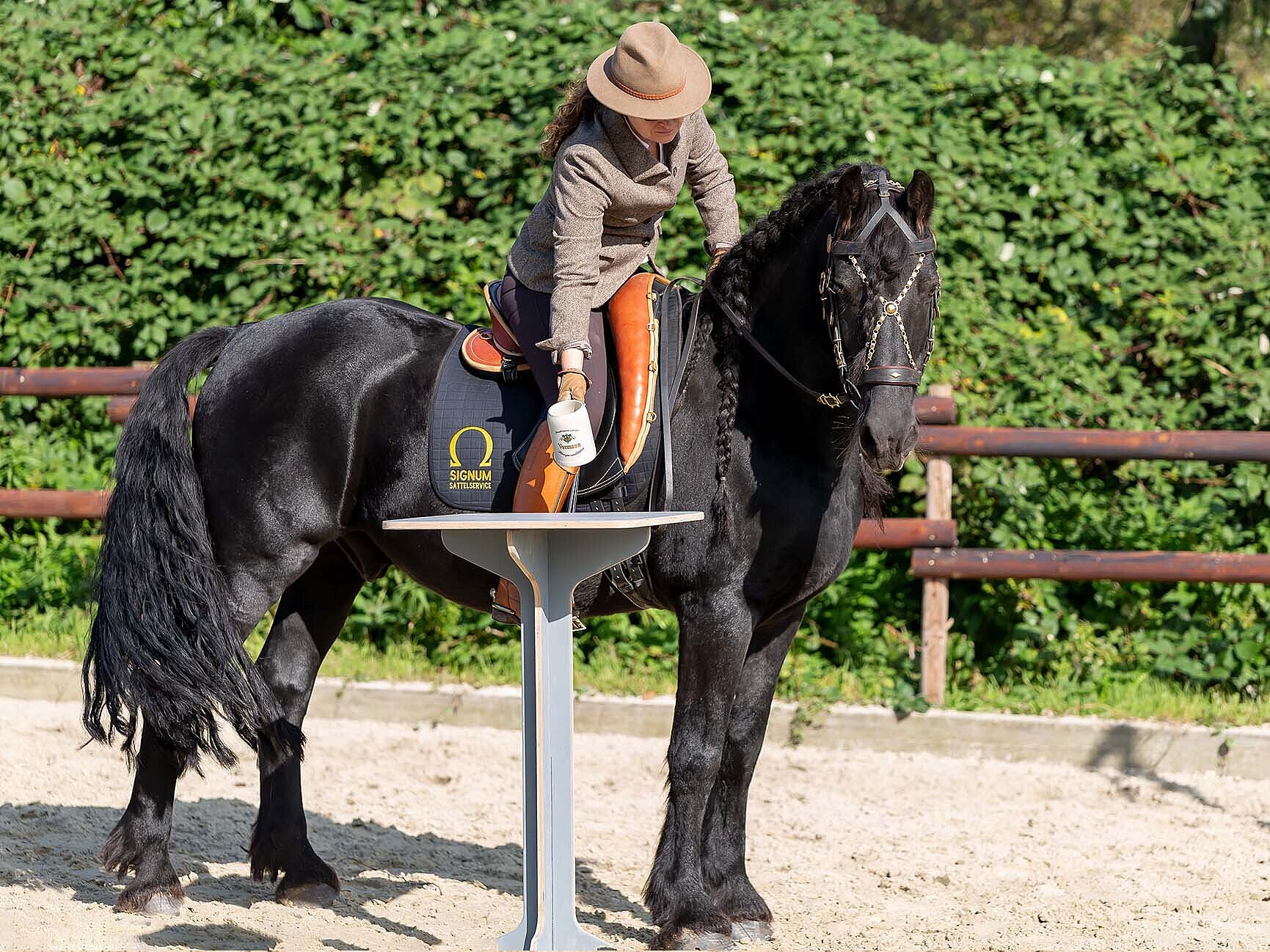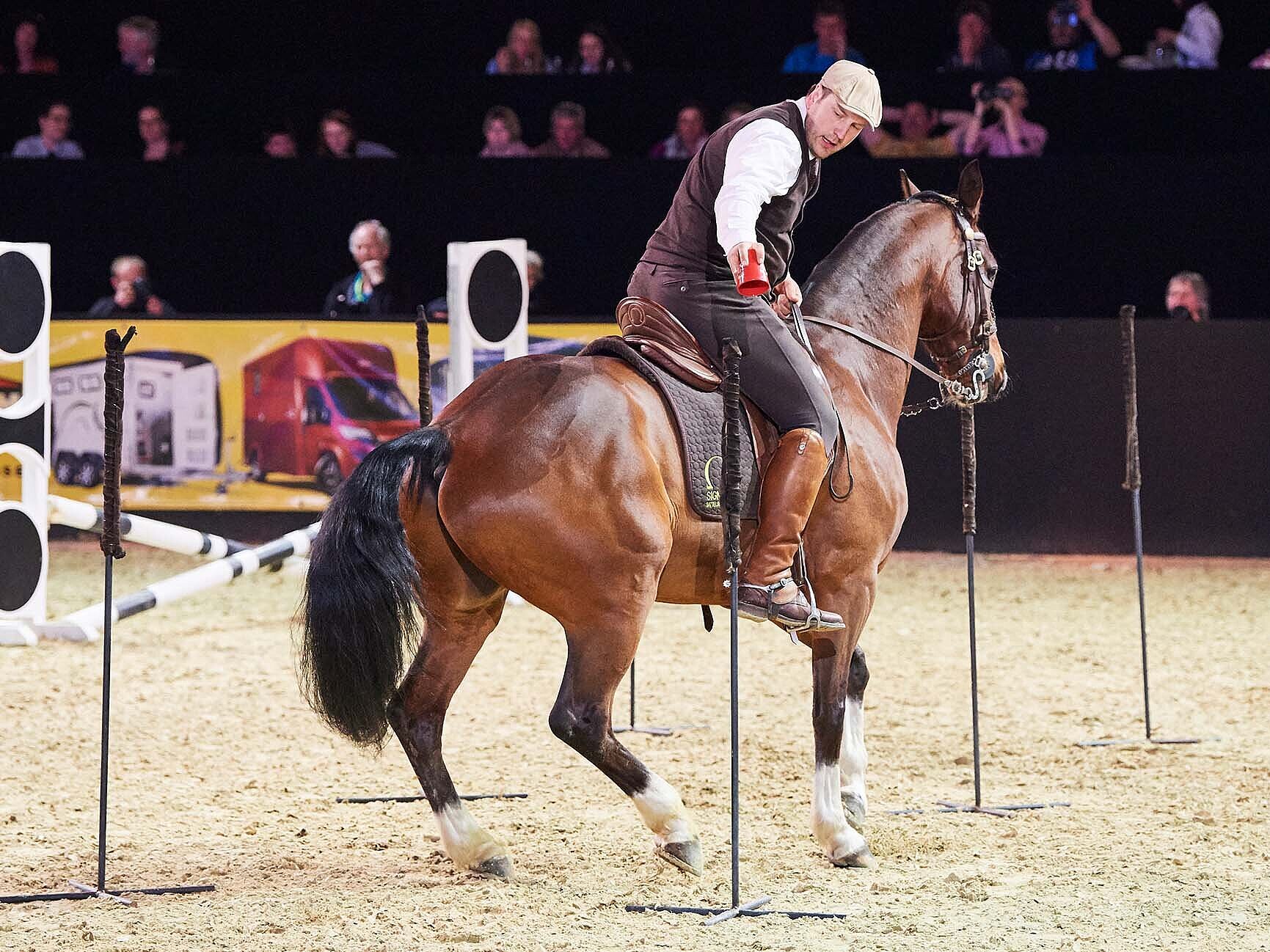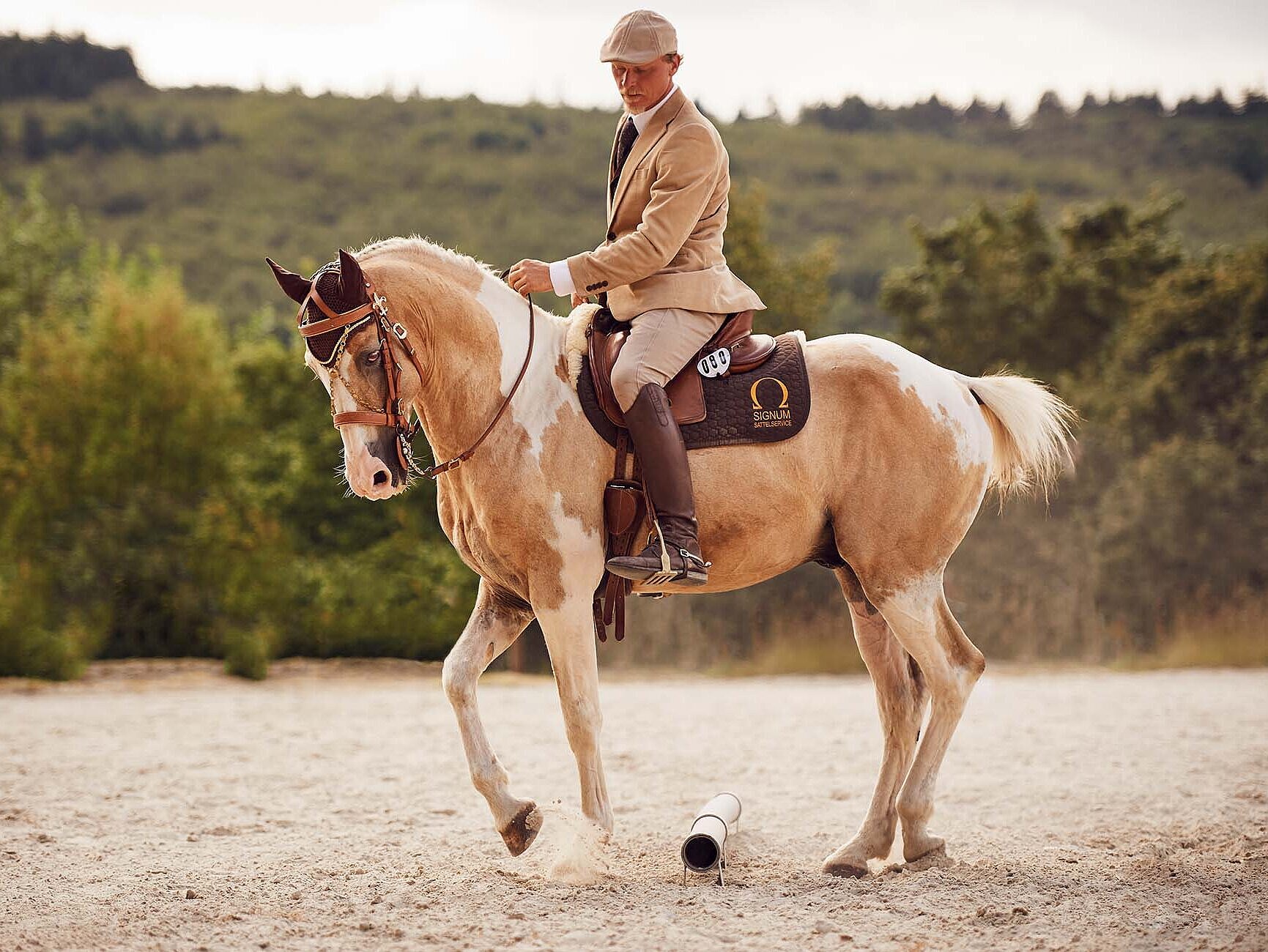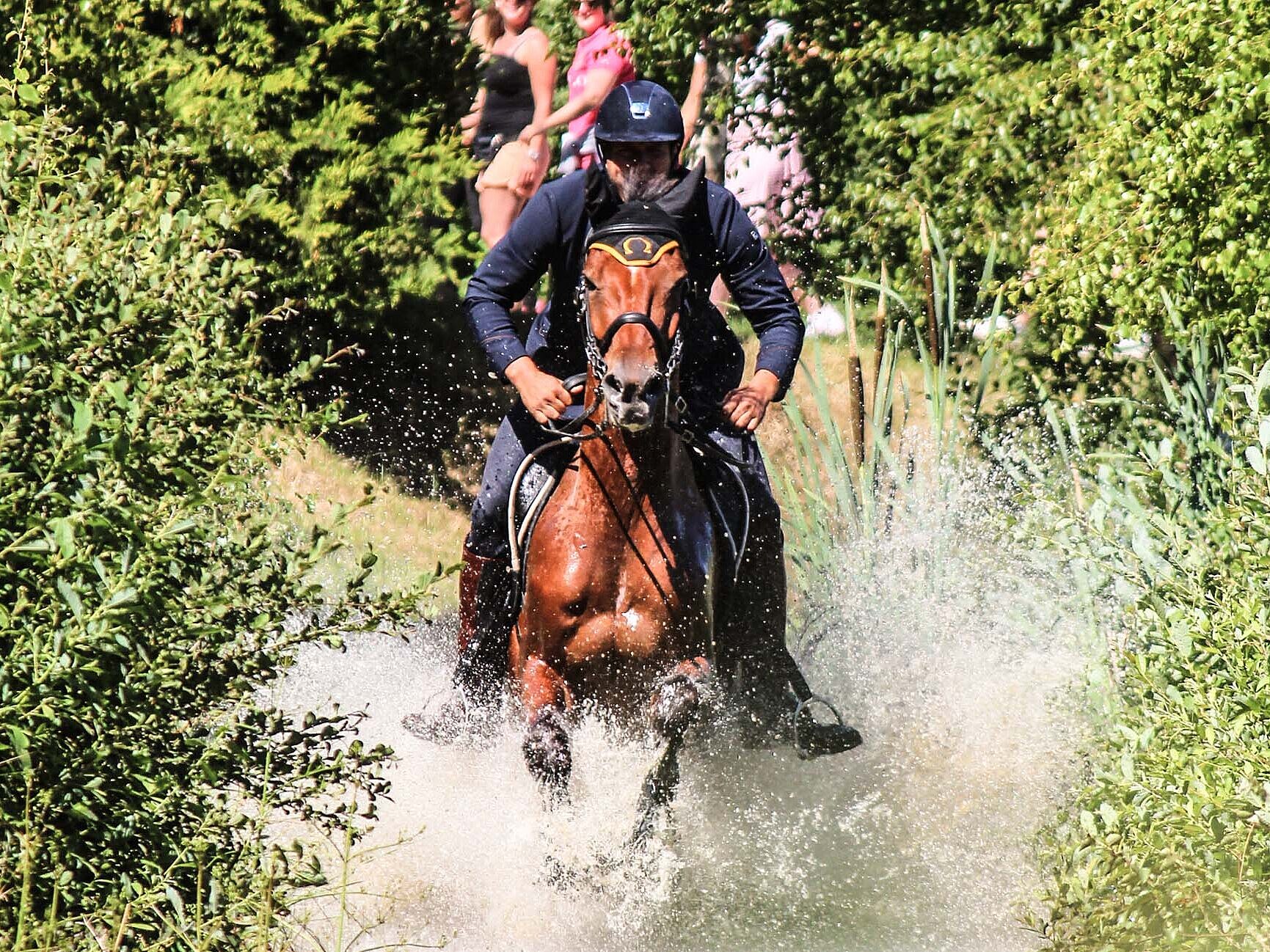Working Equitation Trail obstacles in theory & practice
We would like to pass on our knowledge and many years of experience in working equitation to anyone who is interested. The Trail ABC gives you an overview of the variety of Working Equitation trail obstacles. What are the requirements for horse and rider? How is the obstacle mastered? First impressions and suggestions for a successful start are shown here.
Free instructional videos
The dressage trail and the speed trail are two of the disciplines in working equitation. But what kind of obstacles can horse and rider encounter in this trail course and how do they have to be mastered? (Videos only available in German)
Our team at SIGNUM Sattelservice and D&S EQUIWELT has created a free video series on this topic for you. The individual obstacles are shown in theory and practice in various videos. Gernot Weber (internationally successful Working Equitation rider & sports manager of the WED e.V.) explains in a first video the theory of each obstacle, what the requirements are and how horse & rider can master them.
In a second video, he and the riders Jenny Felscher from blindly follow horses and Anja Mertens with Con Solido show how you can master the obstacle shown with your own horse.
